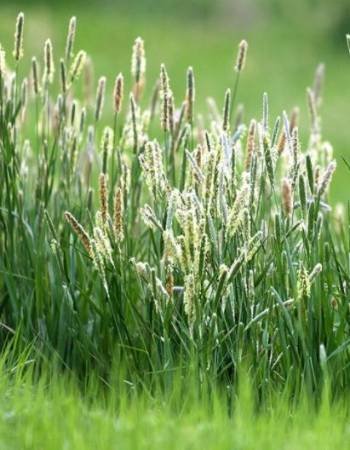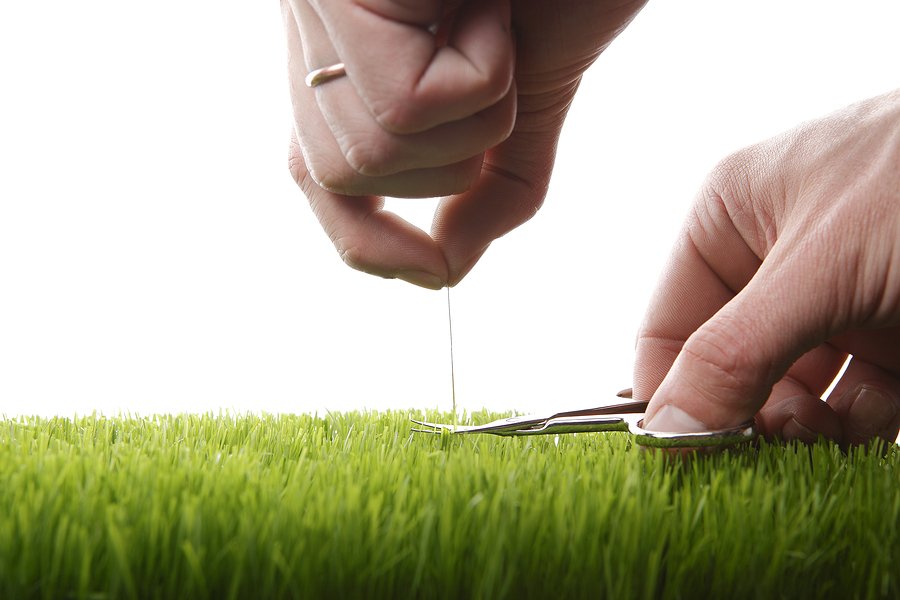
Types of Grass
Types of grass in New Zealand
Having a vibrant and well-maintained lawn is not only appealing to the eye but also therapeutic and adds value to your home. To achieve the best results, you need to choose the right kind of grass, pesticides, lawn care and dedication.


Right Type Of Grass For Your Lawn
Choosing the right grass for your backyard and lawn might be quite challenging, especially when you realize the very many varieties of grass we have in New Zealand. But with proper research and help from the experts, you will be able to pick the best choice for your needs.
Factors To Consider
Below, we will demystify this vast topic on the grass, and hopefully, you will be able to identify the type of grass that works best for you. But first, before we discuss the common types of grass in New Zealand, let us look at the factors to consider when choosing grass.
Lawn Grass
Best Grass For Your Lawn
There many factors to consider when choosing the best grass type for your lawn. If you don’t get this right it might be quite costly in the long run. Some of the main things to consider is Quality of grass seeds, maintenance , climate, soil type, lawn usage and much more.
Quality of grass seed: choosing a viable grass seed is the most pivotal step. The quality you choose affects the outcome and appearance of your lawn. The higher the quality, the better your lawn will be, and vice versa.
Maintenance: Achieving a vibrant lawn needs a lot of care and nurturing. Grass maintenance includes; watering, fertilization, pruning, brushing, raking, etc. Some grass requires higher maintenance than others, meaning that their maintenance cost will be higher. When choosing grass, it is essential to know how often you can take care of it.
Climate: Grass growth is hugely affected by the climatic condition of your region. Understand the weather patterns is crucial to identify the best grass for your lawn. Some grass types do well in warm areas, others in a cold climate, while others can withstand all climate types.
Soil type: the soil moisture, oxygen levels, soil temperature and nutrients affect grass growth. Knowing your lawn’s soil condition will save you a lot of frustration that comes with a dull, unattractive lawn.
Lawn usage: understand your need first before settling for grass is very crucial. If your lawn is for ornamental purposes, you can consider grass such as pearl millet, but if you intend to use it for outdoor activities with foot-traffic, get hardy grass such as couch grass Kikuyu grass would be best.
Shading: some grasses thrive better in shades than others, so it is useful to know the situation on your lawn or the place you intend to plant your tuff-grass.
TYPES OF GRASS IN NZ
We have sourced out information about the most common types of lawn grass in New Zealand. Find out the features of these lawn grasses and see which type of grass is best suited to your lawn.
Tall Fescue
Tall Fescue is a perennial grass known for its deep-rooted system, making it ideal for dry seasons. It thrives in most soil types though the most ideal is well-drained clay soil. It does well in summer and autumn. Ideal for Auckland climate conditions.
Characteristics: dark green leaves, drought-resistant, and hard-wearing. It has a coarse texture that does not get squashed when trampled upon by objects.
Recommended mowing height: 50-99 mm
Best for: backyards with kids and pets who love to play outdoors.
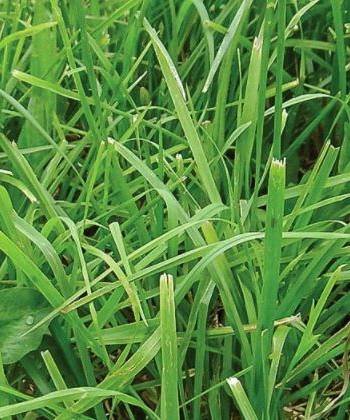
Fine Fescue
Fine Fescue tolerates close mowing and is best known to be shade tolerant. It does not thrive well in high humidity regions.
Characteristics: This type of grass has thin needle-shaped leaves with a medium green color.
Recommended mowing height: 30-40mm.
Best for: lawns with minimal foot traffic as it easily suffers impacts..

Couch Grass
It is an evasive type of grass that is quickly gaining popularity in New Zealand. It is rugged and robust. Its hardiness makes it great for high traffic outdoors, especially for families with children and pets. Couch grass does not thrive in shaded and frosty conditions; it tends to thrive in high-salt content soils in coastal areas. Couch grass has a very high tolerance to wear and recovers very well from such setbacks. The leaves tend to become yellow or brown during cold or frosty weather, which disappears when the weather is favorable.
Characteristics: deep-root system and dark green leaves
Recommended mowing height: 30-40 mm
Best for: sideways and high-traffic backyards with children and pets
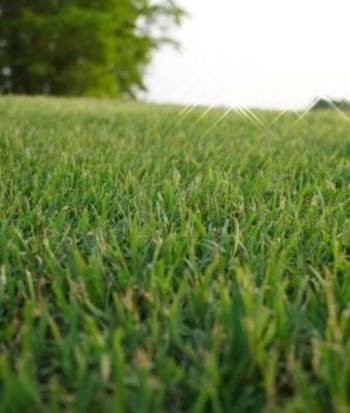
Kikuyu Grass
This type of grass is mostly found in the coastal area of New Zealand. It is best known for its hardiness and ability to withstand all weather types, but it thrives the most in warm areas.
Characteristics: deeply embedded root system, which makes it hard to get rid of your lawns and backyards.
Recommended mowing height: 30-40mm
Best for: outdoors with high foot traffic.

Ryegrass
It is an excellent choice for sports grounds but requires a lot of sunlight and constant watering, especially in summer. Ryegrass is famous for its 12-month germination, and it establishes very quickly too. The only downside is that ryegrass needs regular seeding as it tends to clump instead of spreading through rhizomes or stolons—failure to regular seeding results in patchy and bare spots on your lawn, which is not appealing.
Characteristics: has an appealing pale green color perennial variety, which is pest and disease resistant. It quickly establishes thanks to its speedy germination.
Recommended mowing height: 40-50mm
Best for: landscaping, sports fields, parks and reserves

Buffalo Turf
Scientifically known as stenotaphrum secundatum; is a variety of grass does well in most soil types and withstands moderate shading. It is best for people who prefer minimal as it requires less maintenance; while offering pretty good coverage. It is also known for its ability to tolerate high heat. The only downside is that buffalo turf is not good with high foot traffic areas, and it is also less drought-resistant than most of the lawn varieties in the market.
Characteristics: coarse-textured grass with dark green leaves; that thrive in moist coastal regions. It blooms in summer and tolerates a soil pH of between 5.0 and 8.5.
Best for; lawns, pastures and ranches.
Now that you learned about various grass types in NZ, good luck in choosing the best grass for your lawn. Do not be afraid to engage with a lawn care specialist to help pick out the best grass choice for your lawn. A consultation will add a bit to your landscaping budget and save you loads of trouble in the future.
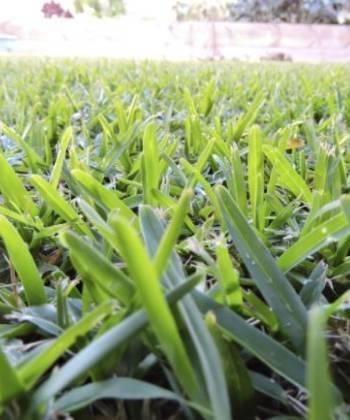
Mondo Grass (OphiopogonJaburan)
Mondo grass thrives in almost all soil conditions and is drought and frost tolerant, making it ideal for all year round usage. Its hardiness and resilience make it ideal for most gardens; once established, Mondo grass requires minimum attention.
Characteristics: has narrow arching leaves and small flowers. The color density usually depends on sun exposure. It may grow up to a length of 18″ inches.
Best for lining flowerbeds.

Black Mondo Grass (ophiopogon planiscapus)
The black Mondo is an aesthetically appealing variety of grass, which will automatically give your lawn an instant facelift with its dark hue. It will stand out from the conventional grass varieties. The maintenance for black Mondo grass is relatively high, as it requires constant watering to sustain its growth. It has the resilience to withstand winter.
Characteristics: Has dark strap-like leaves and grows up to a height of about 10 inches—usually flowers in the summer. The foliage darkens with the weather, tending to be darker during the warmer weather.
Best for: ornamental purposes around the edges and rocky gardens.
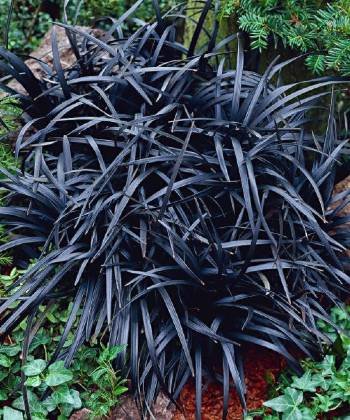
Pampas Grass
They are of two types: purple pampas (c. jubata) and the common pampas (Cortaderiaselloana). They have dead leaves at the base, which look like wood shavings. Due to the high dry content matter, pampas grass is prohibited as it is a high risk for the spread of wildfires and harbors rodents. The best way to handle pampas grass is to eradicate it through; aerial spraying, herbicides, cutting, and biological control.
Characteristics: it is a highly invasive grass with sharp leaves which pose a cutting hazard when mishandled. It has a vast base composed of spiraling dead leaves.
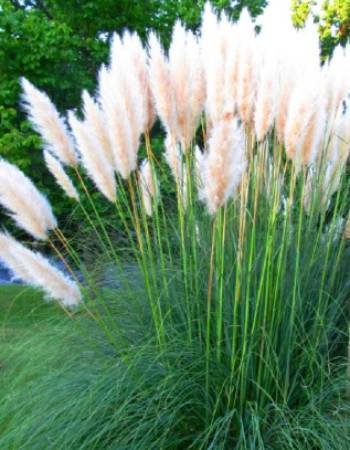
Carex Testacea
Also referred to as New Zealand Orange Sedge, it is known for its tolerance in windy and drought-prone areas, mostly in the coastal regions. It thrives in moist, well-drained and fertile soils. It is valued for its year-long appeal and requirement for minimal care.
Characteristics: This is a New Zealand native perennial grass that densely forms tufted clump foliage with a distinctive orange and green coloring. It grows to a height of 18-24 inches with a broad and dense spread.
Best for: large landscaping projects on borders, ponds, streams, edging, etc.

Chionochloa Flavicans
chionochloa flavicans is native tussock grass, great for areas that require low planting; It thrives in well-drained soil with either full sun or partial shade. It has tolerance in windy and drought conditions, which makes it a great coastal plant.
Characteristics: leaf width of up to 12mm, and has green plumes that later turn light brown; the plumes grow up to 30cm long and usually appear in summer. chionochloaflavicans grow up to 1m tall and produces plenty of seeds.
Best for: large container planting where it will arch nicely over the sides of the pot.
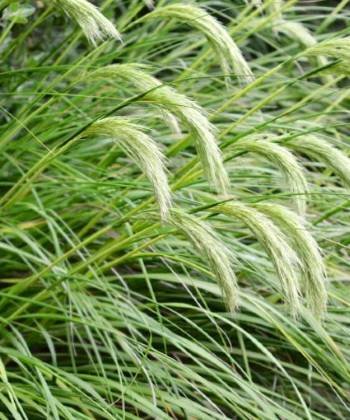
Anemanthele Lessoniana
It is also known as New Zealand wind grass, gossamer grass or pheasant’s tail; it is a clump-forming and fast-growing ornamental grass variety. It is also drought-tolerant, pest and disease-free, which requires minimal maintenance.
Characteristics: fast-growing semi-evergreen grass with long narrow dark green arching leaves with soft seed ends. The pheasant’s tail grows up to 3ft tall and about 90cm wide; it thrives in full sun or partial shades on well-drained soils.
Best for; ornamental purposes, usually ideal for container planting, edging, and gravel gardens.

Paspalum (paspalumdilatum)
Paspalum is a problematic perennial weed grass that causes a nuisance on lawns in most of New Zealand. It is hard to eradicate it due to its speed of growth and spread, especially in summer and autumn.
Characteristics: has an extensive fibrous root system, prostrate leaves and short, stout rhizomes. Its shoots grow close to the ground, such that it makes it hard to eradicate by mowing.
Control: a high glyphosate concentration gives good results, but it is not recommended on turf as it will kill the lawn grass too.
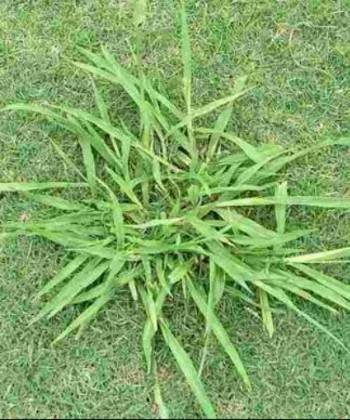
Chionochloa Rubra
They are commonly known as Red Tussock Grass. It has excellent usage due to its high tolerance against dry, windy, and low fertility soil conditions. Mulch the bottom of chionochloaRubra to help retain moisture for longer.
Characteristics: evergreen, clump-forming grass that can attain a height of up to 1m. It has long copper streaked leaves and brown flowers that blossom between February and April.
Best for; container planting, rocky areas and bordering.

Cat Grass
As the name suggests, cat grass is very beneficial to cats, and it is easy to grow.
Characteristics: It is a densely tufted and hardy grass variety known for its richness in vitamins and minerals.
Best for: indoor use as it helps in aiding digestion and elimination of furballs in cats.
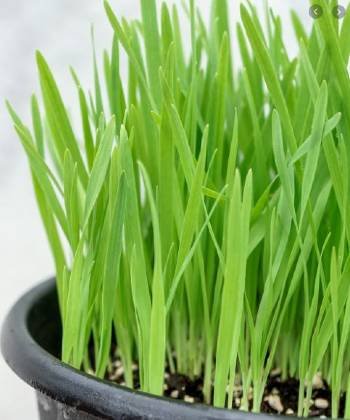
New Zealand Sedges
These are pastoral and environmental weeds. They are highly invasive
Characteristics: They are perennial grass-like herbs that grow up to a height of 1.5m; with cylindrical looking flowers.
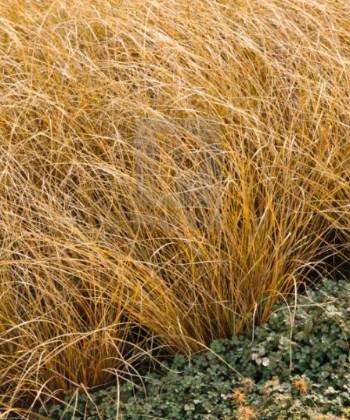
Miscanthus
Miscanthus Sinensis is also known as maiden grass. It grows well in most soil types but thrives most in well-drained soil. It is best for all year round usage as it endures all kinds of weather, though it is intolerant to soils with high salt content and shaded areas. The maiden grass needs minimal maintenance.
Characteristics: is a tall perennial grass with arching leaves. Has clumping features and grow up to 3m tall.
Best for: ornamental purposes as a border plant.

Crabgrass (Digitaria Ischaemum)
Crabgrass is a very stubborn weed that causes such a nuisance once it finds its way into your lawn. It tends to weaken the turf around it with toxins. Luckily, it is a one-season weed that thrives in summer and dies after dropping seeds or once hit by frost.
Characteristics: grows close to ground with stem extensions that look like crab legs. It has a lighter color than the conventional lawn grasses; it can be yellow-green or bluish-green.
Prevention: mow high and maintain a thick lawn such that the soil stays cool with moisture for longer; crabgrass dislikes moisture and shaded areas. Regular watering ahead of crabgrass season will discourage its growth, usually in late spring or early summer.

Timothy Grass (phleum pratense)
Timothy grass is a perennial grass with low drought resistance, but it is very palatable and provides high-quality pasture. Best suitable moist, heavy soils in cool-temperate regions. It is excellent for hay as it retains its quality for the better. The downside is that Timothy grass is prone to drought and pest infestation if not well-managed.
Characteristics:Has alow drought tolerance and late flowering. Timothy grass is a green, tall-growing grass that grows to about 3foot high, with spike-like compact panicles and a fibrous root system. It thrives in soil pH between 5.4 and 6.2.
Best for; Pastures in most parts of New Zealand.
